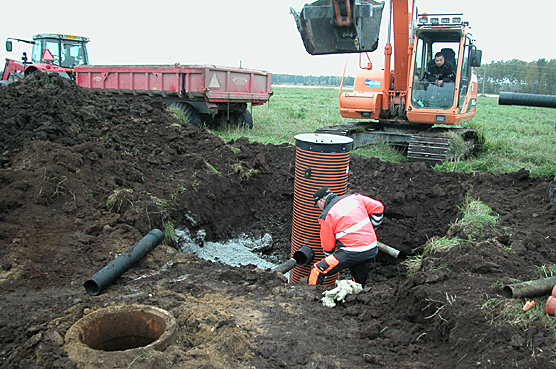
A reed canary grass field in Inganneva. © Image: Sanna Saarnio.
In its Canemure sub-project, Natural Resources Institute Finland (Luke) is testing an effective means of reducing greenhouse gas emissions from peat fields, paludiculture, under Finnish conditions. The project also promotes the market for wetland products by bringing together farmers and enterprises in the sector.
Most greenhouse gas emissions from agriculture come from the soil. Peat fields, in particular, have significant emission reduction potential, as up to 53% of agricultural emissions derive from peatlands and about 12% of Finland’s arable land is peatland.
When peat fields are dried and tilled, oxygen is added to the soil and nitrous oxide and carbon dioxide, which warm the climate, are released from the decomposing peat.
“Emissions from peat fields can be mitigated by reducing the availability of oxygen in the soil, as the decomposition of peat is much slower in an oxygen-free state. In natural marshes, litter and peat decomposition is slow, as they are naturally wet areas,” says Sanna Saarnio, Research Scientist at Luke. “In practice, low-oxygen conditions can be created in the field by rewetting, i.e. by raising the water table, for example, by means of control dams or drainage.”
Paludiculture enables the agricultural use of peat fields
Luke is the first in Finland to study field-scale paludiculture in the fields of voluntary farmers in North Ostrobothnia, which would enable the economic use of peat fields and reduce their emissions. One experimental field is used to grow reed canary grass and another to grow grass for the farm's livestock feed.
Reed canary grass can be used, for example, as an energy plant or bedding or feed for farmed animals. Fields in paludicultural use can also be used to grow willow for energy or berries, for example. Reed canary grass and common reed can be used to produce substrates to replace peat-based ones.
The prerequisite for paludiculture is that the water table in the field can be adjusted by dams or drainage systems, for example, during field work.
Farmer Tapani Yrjänä grows fodder in an experimental field on his farm. “The yield used to be quite poor. Before the experimental activity, the field previously used as a feeding area for wildlife was re-drained in order to produce crops. After the drainage, it was sown with grass. The field now provides fodder for our beef cattle, which is particularly suitable for suckler cows. The crop is harvested in mid-summer by lowering the water table during harvest,” says Yrjänä. “It is important to control the humidity so that the crop can be harvested from the fields and the biological activity of the field can be maintained.”
Exploring commercial opportunities
Paludiculture is not yet widely practised in Finland on a commercial scale. “The aim is to find better markets and applications for paludiculture crops. There is more potential for the market than we had previously imagined,” says Saarnio.
“Partners are currently being mapped out. For example, cattail seed heads would be suitable as a raw material for the clothing industry, and open-minded farmers have tried using cattail as a food product.”
There are already more highly refined markets for paludiculture products in Central Europe, so we can learn a lot from there as well. In particular, the use of biomass as a building material is one interesting area for development.
“The subsidy system must also be developed to cover new cultivation methods. Adjustable drainage is already receiving agricultural subsidies which can also be used for rewetting fields. Many of the species used in paludiculture are already eligible for subsidy,” Saarnio tells.

Installation of an adjustable drain well. © Image: Sanna Saarnio.
Restoring a field to a mire biotope is an alternative
It is also possible to restore a peat field to a mire biotope by rewetting. In addition to climate benefits, the measure supports biodiversity and compensates for floods. “Restoring the area to its natural state would be particularly suitable for already decommissioned peat fields unsuitable for cultivation, so that the activity would not reduce the cultivated area,” Saarnio points out.
In Finland, Metsähallitus has conducted one experiment to restore a peat field to a fen habitat. The possibilities for restoration should therefore be further explored in the future.
New guide to climate action in peat fields
Natural Resources Institute Finland has published a guide for farmers and agricultural advisers on how to rewet peat fields for paludicultural use and restoration to mires. “The guide will help you get started, but we need to take a closer look at the crops to be grown and the practical measures to be taken. I hope this guide will stimulate interest in the subject. We will work on a more in-depth version of the guide later during the Canemure project,” says Saarnio.
In addition, Luke will study the effects of paludiculture on greenhouse gas emissions from peat fields during the project.
Further information:
- Researcher Scientist Sanna Saarnio, Natural Resources Institute Finland (Luke), sanna.saarnio@luke.fi